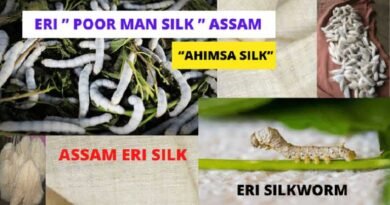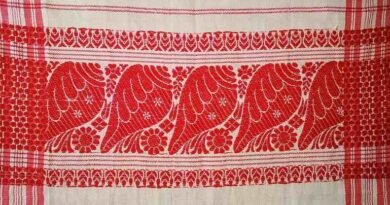Process to get Silk from the Silkworm-চিল্ক তৈয়াৰ কৰাৰ প্ৰক্ৰিয়া
Process to get Silk from the Silkworm
Silk is likely one of the most demanding textile and material merchandise since historic occasions. It originated from China. Silkworm or Bombyx Mori (Scientific Identify) is chargeable for the manufacturing of silk. In China it was cultivated since B.C. and now has unfold all through the world by merchandising.
Mainly Silk is a pure fiber protein and produced by the bugs like moths or caterpillars. The protein current in Silk is fibroin. Silk fiber has a triangular prism-like construction which permits silk material for the refraction of incoming gentle at totally different angles then it produces totally different colours. In India there are primarily 4 forms of silk is produced particularly Mulberry silk, Tasar silk, Muga silk and Eri silk.
How silk is made !
Breeding silkworms: – Wholesome Feminine silk moths can lay around 300 – 500 eggs at a time. Those eggs finally hatch to silkworms, that are incubated in a managed surroundings till they hatch into larvae (caterpillars).
Feeding the Larvae
The silkworms feed solely on the leaves of the mulberry tree. Mulberry leaves are chopped and fed to the voracious silkworms for 20 to 35 days. Throughout this period the worms improve in dimension to about 3.5 inches (8.9 cm). Additionally they shed their pores and skin, or molt 4 occasions and alter from grey to a translucent pinkish colour.
Spinning the cocoon
Hooked up to a safe body, the silkworm will start spinning its silk cocoon by rotating its physique in a figure-8 motion round 300,000 times – a course of which takes around 3 to eight days. Each silkworm produces single strand of silk which measures round 100 meters in length and is held collectively by a kind of pure gum referred to as sericin.
Thread extraction
As soon as the silkworms have spun their cocoon, they are going to finally enclose themselves inside after which it’s time to extract the silk threads. The cocoons are positioned into boiling water with a view to soften and dissolve the gum that’s holding the cocoon collectively. This can be a essential step within the silk manufacturing course of because it ensures that there is no such thing as a injury to the continuity of every thread. Every thread is then rigorously reeled from the cocoon in particular individual length threads, that are then wound on a reel. Among the sericin should still stay on the threads to guard the fibers throughout processing, however that is normally washed out with cleaning soap and boiling water.
Dyeing
The silk threads have been washed and degummed. They are going to be bleached and dried earlier than the dyeing course begins. The threads will probably be soaked collectively in bundles, inside a pot of sizzling indigo leaves and water. This of course will happen for a number of days over a period to make sure of the correct colour tone and high quality.
Spinning
The method of spinning primarily unwinds the dyed fibers on to a bobbin, in order that they lay flat prepared for the weaving course of. This may be accomplished in many alternative methods from hand-spinning to ring-spinning and mule spinning.
Weaving
Weaving is the method through which the ultimate piece of silk comes collectively. There are lots of alternative ways through which silk may be woven – satin weave, plain weave and open weave are most typical, and the end of the silk will rely upon the kind of weave. Usually, weaving includes interlacing two units of threads in order that they lock round one another and create a powerful, uniform piece of material. The threads will probably be woven at proper angles to one another, and the 2 totally different angles are referred to as a warp and a weft. The warp will run up and down the material, whereas the weft runs throughout it. So Finally silk is produced.




